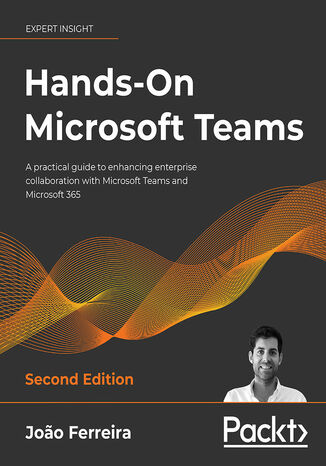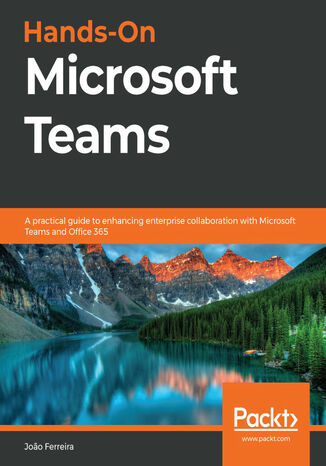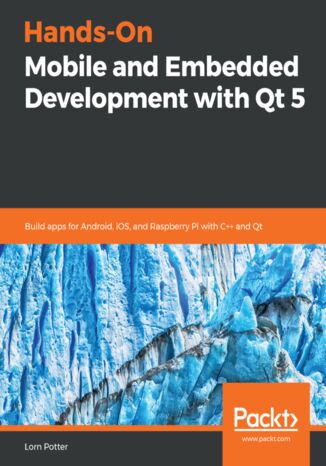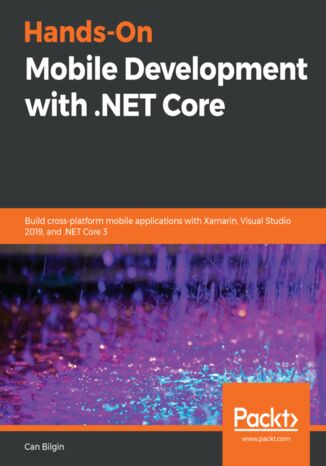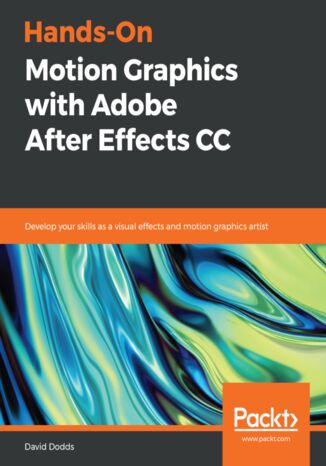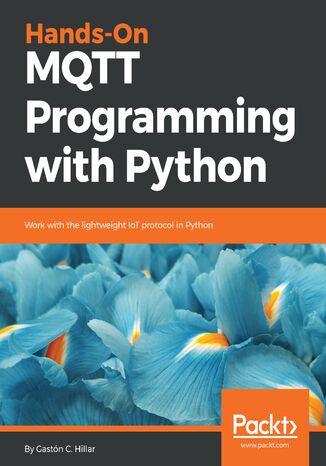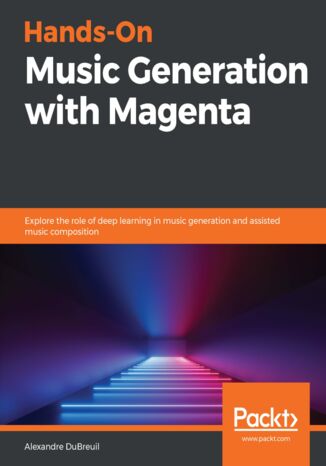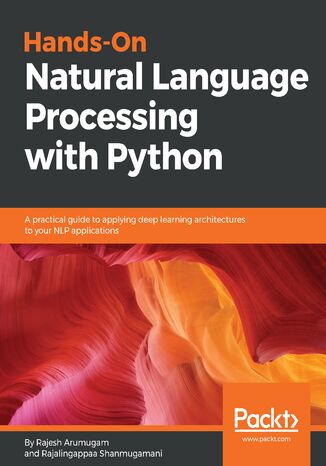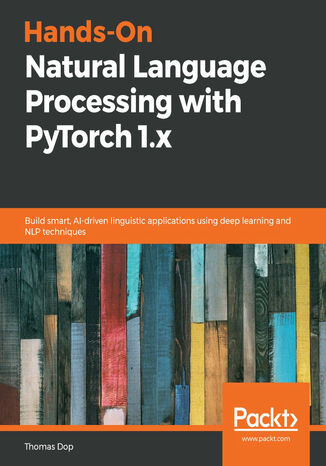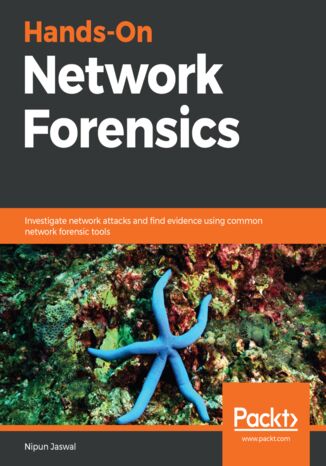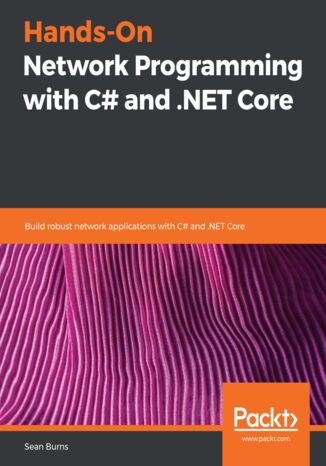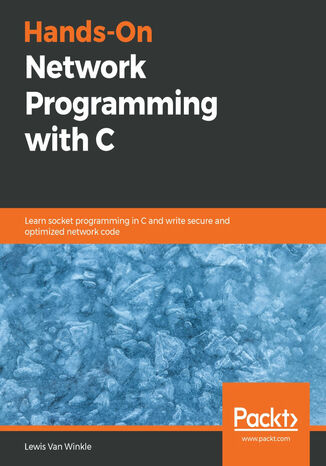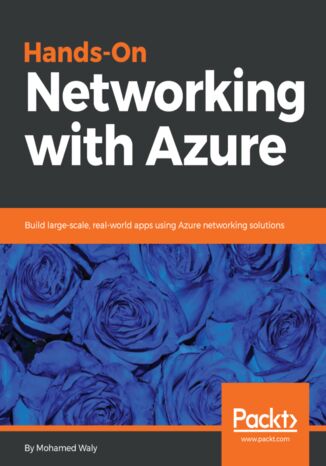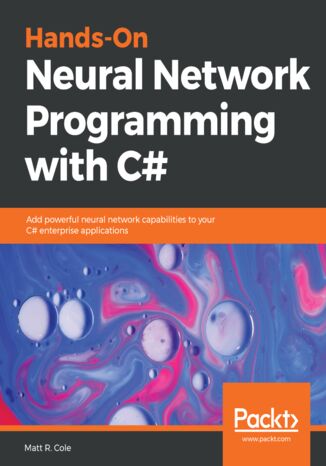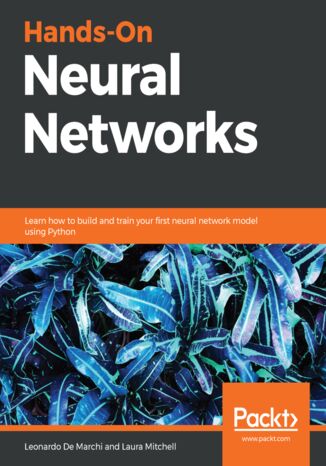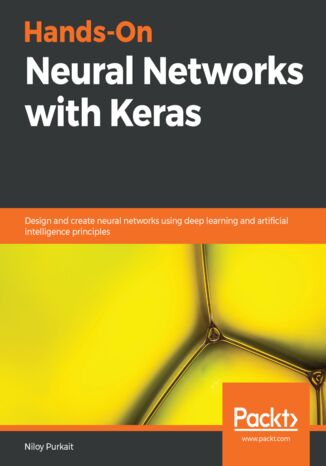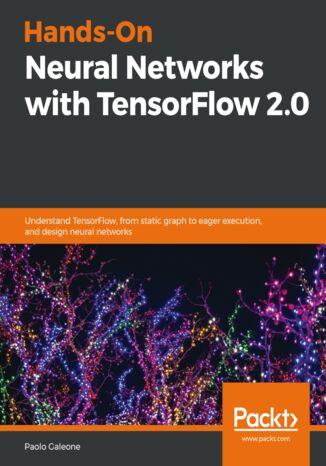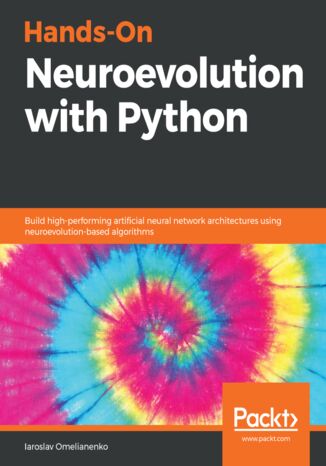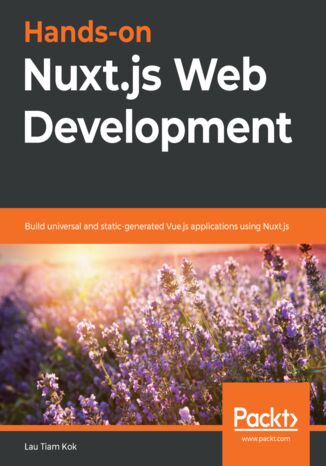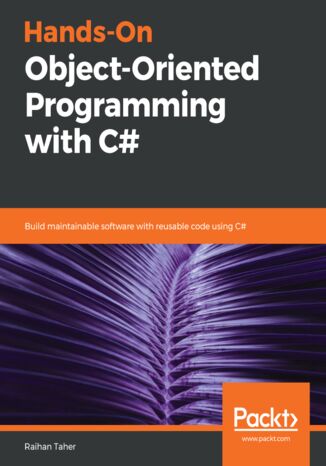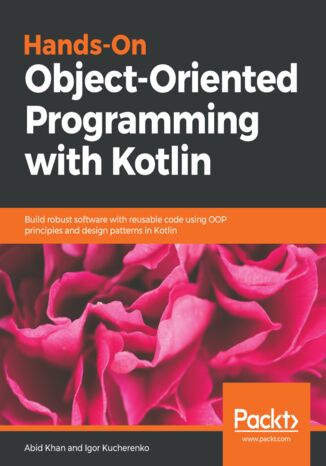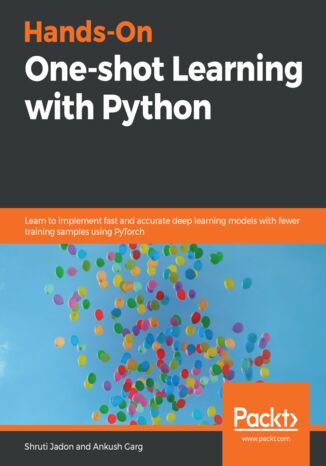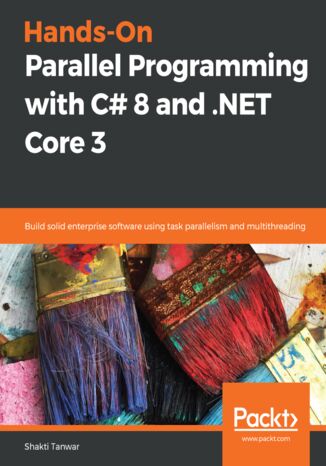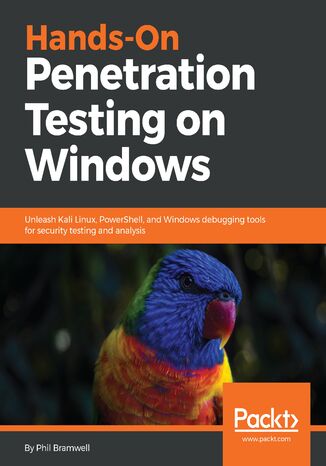Категорії
Електронні книги
-
Бізнес та економіка
- Біткойн
- Ділова жінка
- Коучинг
- Контроль
- Електронний бізнес
- Економіка
- Фінанси
- Фондова біржа та інвестиції
- Особисті компетенції
- Комп'ютер в офісі
- Комунікація та переговори
- Малий бізнес
- Маркетинг
- Мотивація
- Мультимедійне навчання
- Нерухомість
- Переконання та НЛП
- Податки
- Соціальна політика
- Порадники
- Презентації
- Лідерство
- Зв'язки з громадськістю
- Звіти, аналізи
- Секрет
- Соціальні засоби комунікації
- Продаж
- Стартап
- Ваша кар'єра
- Управління
- Управління проектами
- Людські ресурси (HR)
-
Для дітей
-
Для молоді
-
Освіта
-
Енциклопедії, словники
-
Електронна преса
- Architektura i wnętrza
- Безпека життєдіяльності
- Biznes i Ekonomia
- Будинок та сад
- Електронний бізнес
- Ekonomia i finanse
- Езотерика
- Фінанси
- Особисті фінанси
- Бізнес
- Фотографія
- Інформатика
- Відділ кадрів та оплата праці
- Для жінок
- Комп'ютери, Excel
- Бухгалтерія
- Культура та література
- Наукові та академічні
- Охорона навколишнього середовища
- Впливові
- Освіта
- Податки
- Подорожі
- Психологія
- Релігія
- Сільське господарство
- Ринок книг і преси
- Транспорт та спедиція
- Здоров'я та краса
-
Історія
-
Інформатика
- Офісні застосунки
- Бази даних
- Біоінформатика
- Бізнес ІТ
- CAD/CAM
- Digital Lifestyle
- DTP
- Електроніка
- Цифрова фотографія
- Комп'ютерна графіка
- Ігри
- Хакування
- Hardware
- IT w ekonomii
- Наукові пакети
- Шкільні підручники
- Основи комп'ютера
- Програмування
- Мобільне програмування
- Інтернет-сервери
- Комп'ютерні мережі
- Стартап
- Операційні системи
- Штучний інтелект
- Технологія для дітей
- Вебмайстерність
-
Інше
-
Іноземні мови
-
Культура та мистецтво
-
Шкільні читанки
-
Література
- Антології
- Балада
- Біографії та автобіографії
- Для дорослих
- Драми
- Журнали, щоденники, листи
- Епос, епопея
- Нарис
- Наукова фантастика та фантастика
- Фельєтони
- Художня література
- Гумор, сатира
- Інше
- Класичний
- Кримінальний роман
- Нехудожня література
- Художня література
- Mity i legendy
- Лауреати Нобелівської премії
- Новели
- Побутовий роман
- Okultyzm i magia
- Оповідання
- Спогади
- Подорожі
- Оповідна поезія
- Поезія
- Політика
- Науково-популярна
- Роман
- Історичний роман
- Проза
- Пригодницька
- Журналістика
- Роман-репортаж
- Romans i literatura obyczajowa
- Сенсація
- Трилер, жах
- Інтерв'ю та спогади
-
Природничі науки
-
Соціальні науки
-
Шкільні підручники
-
Науково-популярна та академічна
- Археологія
- Bibliotekoznawstwo
- Кінознавство / Теорія кіно
- Філологія
- Польська філологія
- Філософія
- Finanse i bankowość
- Географія
- Економіка
- Торгівля. Світова економіка
- Історія та археологія
- Історія мистецтва і архітектури
- Культурологія
- Мовознавство
- літературні студії
- Логістика
- Математика
- Ліки
- Гуманітарні науки
- Педагогіка
- Навчальні засоби
- Науково-популярна
- Інше
- Психологія
- Соціологія
- Театральні студії
- Богослов’я
- Економічні теорії та науки
- Transport i spedycja
- Фізичне виховання
- Zarządzanie i marketing
-
Порадники
-
Ігрові посібники
-
Професійні та спеціальні порадники
-
Юридична
- Безпека життєдіяльності
- Історія
- Дорожній кодекс. Водійські права
- Юридичні науки
- Охорона здоров'я
- Загальне, компендіум
- Академічні підручники
- Інше
- Закон про будівництво і житло
- Цивільне право
- Фінансове право
- Господарське право
- Господарське та комерційне право
- Кримінальний закон
- Кримінальне право. Кримінальні злочини. Кримінологія
- Міжнародне право
- Міжнародне та іноземне право
- Закон про охорону здоров'я
- Закон про освіту
- Податкове право
- Трудове право та законодавство про соціальне забезпечення
- Громадське, конституційне та адміністративне право
- Кодекс про шлюб і сім'ю
- Аграрне право
- Соціальне право, трудове право
- Законодавство Євросоюзу
- Промисловість
- Сільське господарство та захист навколишнього середовища
- Словники та енциклопедії
- Державні закупівлі
- Управління
-
Путівники та подорожі
- Африка
- Альбоми
- Південна Америка
- Центральна та Північна Америка
- Австралія, Нова Зеландія, Океанія
- Австрія
- Азії
- Балкани
- Близький Схід
- Болгарія
- Китай
- Хорватія
- Чеська Республіка
- Данія
- Єгипет
- Естонія
- Європа
- Франція
- Гори
- Греція
- Іспанія
- Нідерланди
- Ісландія
- Литва
- Латвія
- Mapy, Plany miast, Atlasy
- Мініпутівники
- Німеччина
- Норвегія
- Активні подорожі
- Польща
- Португалія
- Інше
- Przewodniki po hotelach i restauracjach
- Росія
- Румунія
- Словаччина
- Словенія
- Швейцарія
- Швеція
- Світ
- Туреччина
- Україна
- Угорщина
- Велика Британія
- Італія
-
Психологія
- Філософія життя
- Kompetencje psychospołeczne
- Міжособистісне спілкування
- Mindfulness
- Загальне
- Переконання та НЛП
- Академічна психологія
- Психологія душі та розуму
- Психологія праці
- Relacje i związki
- Батьківство та дитяча психологія
- Вирішення проблем
- Інтелектуальний розвиток
- Секрет
- Сексуальність
- Спокушання
- Зовнішній вигляд та імідж
- Філософія життя
-
Релігія
-
Спорт, фітнес, дієти
-
Техніка і механіка
Аудіокниги
-
Бізнес та економіка
- Біткойн
- Ділова жінка
- Коучинг
- Контроль
- Електронний бізнес
- Економіка
- Фінанси
- Фондова біржа та інвестиції
- Особисті компетенції
- Комунікація та переговори
- Малий бізнес
- Маркетинг
- Мотивація
- Нерухомість
- Переконання та НЛП
- Податки
- Соціальна політика
- Порадники
- Презентації
- Лідерство
- Зв'язки з громадськістю
- Секрет
- Соціальні засоби комунікації
- Продаж
- Стартап
- Ваша кар'єра
- Управління
- Управління проектами
- Людські ресурси (HR)
-
Для дітей
-
Для молоді
-
Освіта
-
Енциклопедії, словники
-
Електронна преса
-
Історія
-
Інформатика
-
Інше
-
Іноземні мови
-
Культура та мистецтво
-
Шкільні читанки
-
Література
- Антології
- Балада
- Біографії та автобіографії
- Для дорослих
- Драми
- Журнали, щоденники, листи
- Епос, епопея
- Нарис
- Наукова фантастика та фантастика
- Фельєтони
- Художня література
- Гумор, сатира
- Інше
- Класичний
- Кримінальний роман
- Нехудожня література
- Художня література
- Mity i legendy
- Лауреати Нобелівської премії
- Новели
- Побутовий роман
- Okultyzm i magia
- Оповідання
- Спогади
- Подорожі
- Поезія
- Політика
- Науково-популярна
- Роман
- Історичний роман
- Проза
- Пригодницька
- Журналістика
- Роман-репортаж
- Romans i literatura obyczajowa
- Сенсація
- Трилер, жах
- Інтерв'ю та спогади
-
Природничі науки
-
Соціальні науки
-
Науково-популярна та академічна
-
Порадники
-
Професійні та спеціальні порадники
-
Юридична
-
Путівники та подорожі
-
Психологія
- Філософія життя
- Міжособистісне спілкування
- Mindfulness
- Загальне
- Переконання та НЛП
- Академічна психологія
- Психологія душі та розуму
- Психологія праці
- Relacje i związki
- Батьківство та дитяча психологія
- Вирішення проблем
- Інтелектуальний розвиток
- Секрет
- Сексуальність
- Спокушання
- Зовнішній вигляд та імідж
- Філософія життя
-
Релігія
-
Спорт, фітнес, дієти
-
Техніка і механіка
Відеокурси
-
Бази даних
-
Big Data
-
Biznes, ekonomia i marketing
-
Кібербезпека
-
Data Science
-
DevOps
-
Для дітей
-
Електроніка
-
Графіка / Відео / CAX
-
Ігри
-
Microsoft Office
-
Інструменти розробки
-
Програмування
-
Особистісний розвиток
-
Комп'ютерні мережі
-
Операційні системи
-
Тестування програмного забезпечення
-
Мобільні пристрої
-
UX/UI
-
Веброзробка, Web development
-
Управління
Подкасти
Microsoft Teams is a permanent fixture in the modern workplace, but many of its productivity-boosting features go unnoticed or unused. Hands-On Microsoft Teams shows you how to use Teams to its full potential through easy-to-follow practical tutorials.This guide to mastering Teams explores the platform in comprehensive detail and how it interacts with the rest of the Microsoft ecosystem to help you work efficiently and manage your resources. You'll get to grips with core functionality like setting up and managing teams, channels, chats, tabs, and meetings.You'll also learn to get the best out of Teams by adding custom apps, integrating with Microsoft 365, using PowerShell automation, and exploring useful settings you didn't know existed. Along the way, you'll be shown various real-world scenarios and how to implement solutions for them in Teams that will increase your productivity.Whether you're an administrator, manager, or team member, by the end of this book you'll be confident in using everything Microsoft Teams has to offer.
Microsoft Teams is a platform for unified communication in modern workplaces. It not only enables effective communication, but also helps you manage your resources through its integration with various Microsoft Office 365 services. This book offers a comprehensive introduction to the platform, getting you up to speed in no time. Complete with hands-on tutorials, and projects, this easy-to-follow guide will teach you how to use Teams in the best possible way.Starting with the basic concepts that will help you collaborate on Teams, this book takes you through expert techniques for creating and managing teams. A dedicated section also features industry practices to help enhance collaboration in modern workplaces. In later chapters, you’ll explore Microsoft services such as SharePoint, PowerApps, Power Automate, and learn how they interact with Microsoft Teams. You’ll also get to grips with dealing with permissions and security issues in managing private and public teams and channels. Along the way, you’ll discover practical scenarios that will help you improve the collaboration in your organization and increase productivity by using Teams features.By the end of this book, you’ll have hands-on experience of using Microsoft Teams, along with the skills you need to improve the way people collaborate in your organization.
Qt is a world-class framework, helping you to develop rich graphical user interfaces (GUIs) and multi-platform applications that run on all major desktop platforms and most mobile or embedded platforms. The framework helps you connect the dots across platforms and between online and physical experience.This book will help you leverage the fully-featured Qt framework and its modular cross-platform library classes and intuitive APIs to develop applications for mobile, IoT, and industrial embedded systems. Considerations such as screen size, device orientation changes, and small memory will be discussed. We will focus on various core aspects of embedded and mobile systems, such as connectivity, networking, and sensors; there is no IoT without sensors. You will learn how to quickly design a flexible, fast, and responsive UI that looks great. Going further, you will implement different elements in a matter of minutes and synchronize the UI elements with the 3D assets with high precision. You will learn how to create high-performance embedded systems with 3D/2D user interfaces, and deploy and test on your target hardware. The book will explore several new features, including Qt for WebAssembly.At the end of this book, you will learn about creating a full software stack for embedded Linux systems using Yocto and Boot to Qt for Device Creation.
.NET Core is the general umbrella term used for Microsoft’s cross-platform toolset. Xamarin, used for developing mobile applications, is one of the app model implementations for .NET Core infrastructure. In this book, you'll learn how to design, architect, and develop attractive, maintainable, and robust mobile applications for multiple platforms, including iOS, Android, and UWP, with the toolset provided by Microsoft using Xamarin, .NET Core, and Azure Cloud Services. This book will take you through various phases of application development using Xamarin, from environment setup, design, and architecture to publishing, with the help of real-world scenarios. Throughout the book, you'll learn how to develop mobile apps using Xamarin, Xamarin.Forms, and .NET Standard. You'll even be able to implement a web-based backend composed of microservices with .NET Core using various Azure services including, but not limited to, Azure App Services, Azure Active Directory, Notification Hub, Logic Apps, Azure Functions, and Cognitive Services. The book then guides you in creating data stores using popular database technologies such as Cosmos DB, SQL, and Realm.Finally, you will be able to set up an efficient and maintainable development pipeline to manage the application life cycle using Visual Studio App Center and Visual Studio Services.
If you’re thinking seriously about making and publishing your videos with professional editing and animation, look no further! Adobe After Effects is a popular tool among video editors and YouTubers to enhance their videos and bring them to life by implementing visual effects and motion graphics.This book will take you right from the basics through to the advanced techniques in Adobe After Effects CC 2018. You will start by setting up your editing environment to learn and improve techniques to sharpen your video editing skills. Furthermore, you will work with basic and advanced special effects to create, modify, and optimize motion graphics in your videos. Lastly, you will not only learn how to create 2.5D animations, but also get to grips with using Cinema 4D Lite to build and animate complete 3D scenes.By the end of the book, you’ll have learned how to package a video efficiently with the help of the projects covered.
Hands-On MQTT Programming with Python. Work with the lightweight IoT protocol in Python
MQTT is a lightweight messaging protocol for small sensors and mobile devices. This book explores the features of the latest versions of MQTT for IoT and M2M communications, how to use them with Python 3, and allow you to interact with sensors and actuators using Python.The book begins with the specific vocabulary of MQTT and its working modes, followed by installing a Mosquitto MQTT broker. You will use different utilities and diagrams to understand the most important concepts related to MQTT. You will learn to make all the necessary configuration to work with digital certificates for encrypting all data sent between the MQTT clients and the server. You will also work with the different Quality of Service levels and later analyze and compare their overheads.You will write Python 3.x code to control a vehicle with MQTT messages delivered through encrypted connections (TLS 1.2), and learn how leverage your knowledge of the MQTT protocol to build a solution based on requirements. Towards the end, you will write Python code to use the PubNub cloud-based real-time MQTT provider to monitor a surfing competition.In the end, you will have a solution that was built from scratch by analyzing the requirements and then write Python code that will run on water-proof IoT boards connected to multiple sensors in surfboards.
The importance of machine learning (ML) in art is growing at a rapid pace due to recent advancements in the field, and Magenta is at the forefront of this innovation. With this book, you’ll follow a hands-on approach to using ML models for music generation, learning how to integrate them into an existing music production workflow. Complete with practical examples and explanations of the theoretical background required to understand the underlying technologies, this book is the perfect starting point to begin exploring music generation.The book will help you learn how to use the models in Magenta for generating percussion sequences, monophonic and polyphonic melodies in MIDI, and instrument sounds in raw audio. Through practical examples and in-depth explanations, you’ll understand ML models such as RNNs, VAEs, and GANs. Using this knowledge, you’ll create and train your own models for advanced music generation use cases, along with preparing new datasets. Finally, you’ll get to grips with integrating Magenta with other technologies, such as digital audio workstations (DAWs), and using Magenta.js to distribute music generation apps in the browser.By the end of this book, you'll be well-versed with Magenta and have developed the skills you need to use ML models for music generation in your own style.
Rajesh Arumugam, Rajalingappaa Shanmugamani, Auguste Byiringiro, Chaitanya Joshi, ...
Natural language processing (NLP) has found its application in various domains, such as web search, advertisements, and customer services, and with the help of deep learning, we can enhance its performances in these areas. Hands-On Natural Language Processing with Python teaches you how to leverage deep learning models for performing various NLP tasks, along with best practices in dealing with today’s NLP challenges.To begin with, you will understand the core concepts of NLP and deep learning, such as Convolutional Neural Networks (CNNs), recurrent neural networks (RNNs), semantic embedding, Word2vec, and more. You will learn how to perform each and every task of NLP using neural networks, in which you will train and deploy neural networks in your NLP applications. You will get accustomed to using RNNs and CNNs in various application areas, such as text classification and sequence labeling, which are essential in the application of sentiment analysis, customer service chatbots, and anomaly detection. You will be equipped with practical knowledge in order to implement deep learning in your linguistic applications using Python's popular deep learning library, TensorFlow.By the end of this book, you will be well versed in building deep learning-backed NLP applications, along with overcoming NLP challenges with best practices developed by domain experts.
In the internet age, where an increasing volume of text data is generated daily from social media and other platforms, being able to make sense of that data is a crucial skill. With this book, you’ll learn how to extract valuable insights from text by building deep learning models for natural language processing (NLP) tasks.Starting by understanding how to install PyTorch and using CUDA to accelerate the processing speed, you’ll explore how the NLP architecture works with the help of practical examples. This PyTorch NLP book will guide you through core concepts such as word embeddings, CBOW, and tokenization in PyTorch. You’ll then learn techniques for processing textual data and see how deep learning can be used for NLP tasks. The book demonstrates how to implement deep learning and neural network architectures to build models that will allow you to classify and translate text and perform sentiment analysis. Finally, you’ll learn how to build advanced NLP models, such as conversational chatbots.By the end of this book, you’ll not only have understood the different NLP problems that can be solved using deep learning with PyTorch, but also be able to build models to solve them.
Network forensics is a subset of digital forensics that deals with network attacks and their investigation. In the era of network attacks and malware threat, it’s now more important than ever to have skills to investigate network attacks and vulnerabilities.Hands-On Network Forensics starts with the core concepts within network forensics, including coding, networking, forensics tools, and methodologies for forensic investigations. You’ll then explore the tools used for network forensics, followed by understanding how to apply those tools to a PCAP file and write the accompanying report. In addition to this, you will understand how statistical flow analysis, network enumeration, tunneling and encryption, and malware detection can be used to investigate your network. Towards the end of this book, you will discover how network correlation works and how to bring all the information from different types of network devices together.By the end of this book, you will have gained hands-on experience of performing forensics analysis tasks.
The C# language and the .NET Core application framework provide the tools and patterns required to make the discipline of network programming as intuitive and enjoyable as any other aspect of C# programming. With the help of this book, you will discover how the C# language and the .NET Core framework make this possible.The book begins by introducing the core concepts of network programming, and what distinguishes this field of programming from other disciplines. After this, you will gain insights into concepts such as transport protocols, sockets and ports, and remote data streams, which will provide you with a holistic understanding of how network software fits into larger distributed systems. The book will also explore the intricacies of how network software is implemented in a more explicit context, by covering sockets, connection strategies such as Transmission Control Protocol (TCP) and User Datagram Protocol (UDP), asynchronous processing, and threads. You will then be able to work through code examples for TCP servers, web APIs served over HTTP, and a Secure Shell (SSH) client. By the end of this book, you will have a good understanding of the Open Systems Interconnection (OSI) network stack, the various communication protocols for that stack, and the skills that are essential to implement those protocols using the C# programming language and the .NET Core framework.
Network programming enables processes to communicate with each other over a computer network, but it is a complex task that requires programming with multiple libraries and protocols. With its support for third-party libraries and structured documentation, C is an ideal language to write network programs.Complete with step-by-step explanations of essential concepts and practical examples, this C network programming book begins with the fundamentals of Internet Protocol, TCP, and UDP. You’ll explore client-server and peer-to-peer models for information sharing and connectivity with remote computers. The book will also cover HTTP and HTTPS for communicating between your browser and website, and delve into hostname resolution with DNS, which is crucial to the functioning of the modern web. As you advance, you’ll gain insights into asynchronous socket programming and streams, and explore debugging and error handling. Finally, you’ll study network monitoring and implement security best practices.By the end of this book, you’ll have experience of working with client-server applications and be able to implement new network programs in C.The code in this book is compatible with the older C99 version as well as the latest C18 and C++17 standards. You’ll work with robust, reliable, and secure code that is portable across operating systems, including Winsock sockets for Windows and POSIX sockets for Linux and macOS.
Hands-On Networking with Azure. Build large-scale, real-world apps using Azure networking solutions
Microsoft Azure networking is one of the most valuable and important offerings in Azure. No matter what solution you are building for the cloud, you'll fi nd a compelling use for it. This book will get you up to speed quickly on Microsoft Azure Networking by teaching you how to use different networking services.By reading this book, you will develop a strong networking foundation for Azure virtual machines and for expanding your on-premise environment to Azure. Hands-On Networking with Azure starts with an introduction to Microsoft Azure networking and creating Azure Virtual Networks with subnets of different types within them. The book helps you understand the architecture of Azure networks. You will then learn the best practices for designing both Windows- and Linux-based Azure VM networks. You will also learn to expand your networks into Azure and how to use Azure DNS. Moreover, you will master best practices for dealing with Azure Load Balancer and the solutions they offer in different scenarios. Finally, we will demonstrate how the Azure Application Gateway works, offering various layer-7 load balancing capabilities for applications. By the end of this book, you will be able to architect your networking solutions for Azure.
Neural networks have made a surprise comeback in the last few years and have brought tremendous innovation in the world of artificial intelligence. The goal of this book is to provide C# programmers with practical guidance in solving complex computational challenges using neural networks and C# libraries such as CNTK, and TensorFlowSharp. This book will take you on a step-by-step practical journey, covering everything from the mathematical and theoretical aspects of neural networks, to building your own deep neural networks into your applications with the C# and .NET frameworks.This book begins by giving you a quick refresher of neural networks. You will learn how to build a neural network from scratch using packages such as Encog, Aforge, and Accord. You will learn about various concepts and techniques, such as deep networks, perceptrons, optimization algorithms, convolutional networks, and autoencoders. You will learn ways to add intelligent features to your .NET apps, such as facial and motion detection, object detection and labeling, language understanding, knowledge, and intelligent search.Throughout this book, you will be working on interesting demonstrations that will make it easier to implement complex neural networks in your enterprise applications.
Hands-On Neural Networks. Learn how to build and train your first neural network model using Python
Leonardo De Marchi, Laura Mitchell
Neural networks play a very important role in deep learning and artificial intelligence (AI), with applications in a wide variety of domains, right from medical diagnosis, to financial forecasting, and even machine diagnostics.Hands-On Neural Networks is designed to guide you through learning about neural networks in a practical way. The book will get you started by giving you a brief introduction to perceptron networks. You will then gain insights into machine learning and also understand what the future of AI could look like. Next, you will study how embeddings can be used to process textual data and the role of long short-term memory networks (LSTMs) in helping you solve common natural language processing (NLP) problems. The later chapters will demonstrate how you can implement advanced concepts including transfer learning, generative adversarial networks (GANs), autoencoders, and reinforcement learning. Finally, you can look forward to further content on the latest advancements in the field of neural networks.By the end of this book, you will have the skills you need to build, train, and optimize your own neural network model that can be used to provide predictable solutions.
Neural networks are used to solve a wide range of problems in different areas of AI and deep learning. Hands-On Neural Networks with Keras will start with teaching you about the core concepts of neural networks. You will delve into combining different neural network models and work with real-world use cases, including computer vision, natural language understanding, synthetic data generation, and many more. Moving on, you will become well versed with convolutional neural networks (CNNs), recurrent neural networks (RNNs), long short-term memory (LSTM) networks, autoencoders, and generative adversarial networks (GANs) using real-world training datasets. We will examine how to use CNNs for image recognition, how to use reinforcement learning agents, and many more. We will dive into the specific architectures of various networks and then implement each of them in a hands-on manner using industry-grade frameworks. By the end of this book, you will be highly familiar with all prominent deep learning models and frameworks, and the options you have when applying deep learning to real-world scenarios and embedding artificial intelligence as the core fabric of your organization.
TensorFlow, the most popular and widely used machine learning framework, has made it possible for almost anyone to develop machine learning solutions with ease. With TensorFlow (TF) 2.0, you'll explore a revamped framework structure, offering a wide variety of new features aimed at improving productivity and ease of use for developers.This book covers machine learning with a focus on developing neural network-based solutions. You'll start by getting familiar with the concepts and techniques required to build solutions to deep learning problems. As you advance, you’ll learn how to create classifiers, build object detection and semantic segmentation networks, train generative models, and speed up the development process using TF 2.0 tools such as TensorFlow Datasets and TensorFlow Hub.By the end of this TensorFlow book, you'll be ready to solve any machine learning problem by developing solutions using TF 2.0 and putting them into production.
Neuroevolution is a form of artificial intelligence learning that uses evolutionary algorithms to simplify the process of solving complex tasks in domains such as games, robotics, and the simulation of natural processes. This book will give you comprehensive insights into essential neuroevolution concepts and equip you with the skills you need to apply neuroevolution-based algorithms to solve practical, real-world problems.You'll start with learning the key neuroevolution concepts and methods by writing code with Python. You'll also get hands-on experience with popular Python libraries and cover examples of classical reinforcement learning, path planning for autonomous agents, and developing agents to autonomously play Atari games. Next, you'll learn to solve common and not-so-common challenges in natural computing using neuroevolution-based algorithms. Later, you'll understand how to apply neuroevolution strategies to existing neural network designs to improve training and inference performance. Finally, you'll gain clear insights into the topology of neural networks and how neuroevolution allows you to develop complex networks, starting with simple ones.By the end of this book, you will not only have explored existing neuroevolution-based algorithms, but also have the skills you need to apply them in your research and work assignments.
Nuxt.js is a progressive web framework built on top of Vue.js for server-side rendering (SSR). With Nuxt.js and Vue.js, building universal and static-generated applications from scratch is now easier than ever before.This book starts with an introduction to Nuxt.js and its constituents as a universal SSR framework. You'll learn the fundamentals of Nuxt.js and find out how you can integrate it with the latest version of Vue.js. You'll then explore the Nuxt.js directory structure and set up your first Nuxt.js project using pages, views, routing, and Vue components. With the help of practical examples, you'll learn how to connect your Nuxt.js application with the backend API by exploring your Nuxt.js application’s configuration, plugins, modules, middleware, and the Vuex store. The book shows you how you can turn your Nuxt.js application into a universal or static-generated application by working with REST and GraphQL APIs over HTTP requests. Finally, you'll get to grips with security techniques using authorization, package your Nuxt.js application for testing, and deploy it to production.By the end of this web development book, you'll have developed a solid understanding of using Nuxt.js for your projects and be able to build secure, end-to-end tested, and scalable web applications with SSR, data handling, and SEO capabilities.
Object-oriented programming (OOP) is a programming paradigm organized around objects rather than actions, and data rather than logic. With the latest release of C#, you can look forward to new additions that improve object-oriented programming. This book will get you up to speed with OOP in C# in an engaging and interactive way. The book starts off by introducing you to C# language essentials and explaining OOP concepts through simple programs. You will then go on to learn how to use classes, interfacesm and properties to write pure OOP code in your applications. You will broaden your understanding of OOP further as you delve into some of the advanced features of the language, such as using events, delegates, and generics. Next, you will learn the secrets of writing good code by following design patterns and design principles. You'll also understand problem statements with their solutions and learn how to work with databases with the help of ADO.NET. Further on, you'll discover a chapter dedicated to the Git version control system. As you approach the conclusion, you'll be able to work through OOP-specific interview questions and understand how to tackle them. By the end of this book, you will have a good understanding of OOP with C# and be able to take your skills to the next level.
Kotlin is an object-oriented programming language. The book is based on the latest version of Kotlin. The book provides you with a thorough understanding of programming concepts, object-oriented programming techniques, and design patterns. It includes numerous examples, explanation of concepts and keynotes. Where possible, examples and programming exercises are included. The main purpose of the book is to provide a comprehensive coverage of Kotlin features such as classes, data classes, and inheritance. It also provides a good understanding of design pattern and how Kotlin syntax works with object-oriented techniques. You will also gain familiarity with syntax in this book by writing labeled for loop and when as an expression. An introduction to the advanced concepts such as sealed classes and package level functions and coroutines is provided and we will also learn how these concepts can make the software development easy. Supported libraries for serialization, regular expression and testing are also covered in this book. By the end of the book, you would have learnt building robust and maintainable software with object oriented design patterns in Kotlin.
One-shot learning has been an active field of research for scientists trying to develop a cognitive machine that mimics human learning. With this book, you'll explore key approaches to one-shot learning, such as metrics-based, model-based, and optimization-based techniques, all with the help of practical examples.Hands-On One-shot Learning with Python will guide you through the exploration and design of deep learning models that can obtain information about an object from one or just a few training samples. The book begins with an overview of deep learning and one-shot learning and then introduces you to the different methods you can use to achieve it, such as deep learning architectures and probabilistic models. Once you've got to grips with the core principles, you'll explore real-world examples and implementations of one-shot learning using PyTorch 1.x on datasets such as Omniglot and MiniImageNet. Finally, you'll explore generative modeling-based methods and discover the key considerations for building systems that exhibit human-level intelligence.By the end of this book, you'll be well-versed with the different one- and few-shot learning methods and be able to use them to build your own deep learning models.
In today’s world, every CPU has a multi-core processor. However, unless your application has implemented parallel programming, it will fail to utilize the hardware’s full processing capacity. This book will show you how to write modern software on the optimized and high-performing .NET Core 3 framework using C# 8.Hands-On Parallel Programming with C# 8 and .NET Core 3 covers how to build multithreaded, concurrent, and optimized applications that harness the power of multi-core processors. Once you’ve understood the fundamentals of threading and concurrency, you’ll gain insights into the data structure in .NET Core that supports parallelism. The book will then help you perform asynchronous programming in C# and diagnose and debug parallel code effectively. You’ll also get to grips with the new Kestrel server and understand the difference between the IIS and Kestrel operating models. Finally, you’ll learn best practices such as test-driven development, and run unit tests on your parallel code.By the end of the book, you’ll have developed a deep understanding of the core concepts of concurrency and asynchrony to create responsive applications that are not CPU-intensive.
Windows has always been the go-to platform for users around the globe to perform administration and ad hoc tasks, in settings that range from small offices to global enterprises, and this massive footprint makes securing Windows a unique challenge. This book will enable you to distinguish yourself to your clients.In this book, you'll learn advanced techniques to attack Windows environments from the indispensable toolkit that is Kali Linux. We'll work through core network hacking concepts and advanced Windows exploitation techniques, such as stack and heap overflows, precision heap spraying, and kernel exploitation, using coding principles that allow you to leverage powerful Python scripts and shellcode.We'll wrap up with post-exploitation strategies that enable you to go deeper and keep your access. Finally, we'll introduce kernel hacking fundamentals and fuzzing testing, so you can discover vulnerabilities and write custom exploits. By the end of this book, you'll be well-versed in identifying vulnerabilities within the Windows OS and developing the desired solutions for them.

